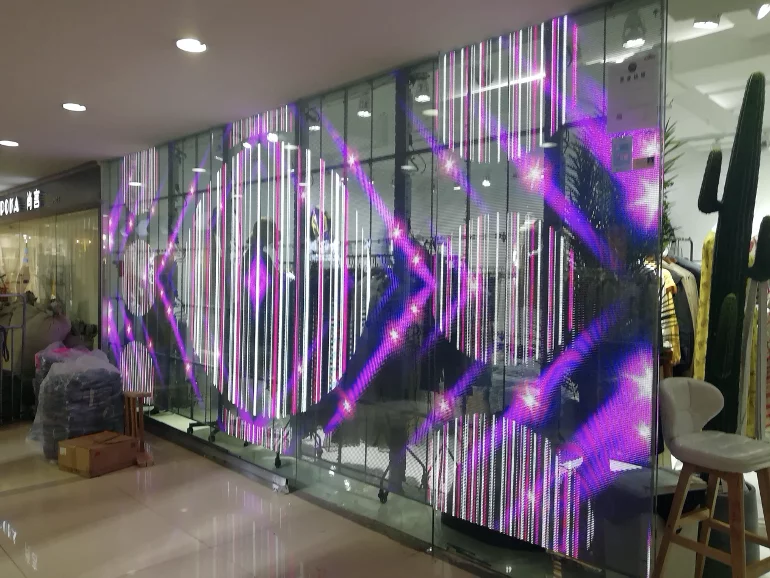
The difference between transparent LED displayand traditional LED display
In the display market, the most popular options are transparent LED displays and traditional LED screen, both of which offer significant economic benefits. So, what are the differences between transparent LED displays and traditional LED displays? Let’s take a closer look!
Display Performance
The unique feature of transparent LED displays is their transparency. They offer extremely high transparency, allowing viewers to enjoy stunning visuals while also seeing the scene behind the screen. Traditional LED displays cannot achieve this level of transparency, but they deliver more vivid and lifelike visuals, providing viewers with a visually stunning and impactful experience.
图片display effect of transparent LED display and traditional LED display

Brightness
In terms of brightness, transparent LED displays are brighter than traditional LED displays. This is because transparent LED displays use larger LED chips, requiring more materials and resulting in higher brightness. Traditional LED displays, on the other hand, use smaller LED chips, requiring fewer materials and resulting in lower brightness.
However, both transparent LED displays and traditional LED displays can provide a comfortable viewing experience under both strong and weak lighting conditions.
Structural Design
The LED cabinet is the most noticeable difference between traditional LED displays and transparent LED displays.
Traditional LED cabinets have a box-like shape that can be opened and closed, providing a certain degree of enclosure. In contrast, transparent LED cabinets feature a perforated design resembling blinds, allowing light to pass through and giving the transparent LED display its high transparency.
Traditional LED cabinets have numerous cables and components installed internally, with a weight of 30–50 kg/m². Transparent LED cabinets have many perforated areas and are designed to be lightweight and slim, with a weight of 15–25 kg/m². Therefore, we can see that transparent LED cabinets are more than twice as lightweight as traditional LED cabinets.
In addition to the above differences, the installation positions of their LED lamp beads also differ. The LED lamp beads of transparent LED displays are directly installed on the cabinet without requiring LED modules. In contrast, the LED lamp beads of traditional LED displays are installed on LED modules.

Installation
The installation of transparent LED displays requires a truss structure. The construction of the truss structure uses fewer materials and is simple to assemble, requiring only stable support for the transparent LED display.
Traditional LED display screens also require truss structures for installation. However, the truss structure setup must be adjusted based on various factors such as the size and installation location of the traditional LED display screen. The installation process is highly complex, requires significant materials, and results in a heavier overall weight. Therefore, once installed, it is generally not moved.
Price
In terms of price, traditional LED displays are the most common type, with mature manufacturing processes and established production lines, resulting in lower production costs and more affordable prices. Transparent LED displays, on the other hand, are a relatively new trend, with manufacturing processes that are not yet as refined as those for traditional LED displays, leading to higher production costs and more expensive prices.
Application Areas
Transparent LED displays are better suited for environments that prioritize aesthetics, fashion, and visual uniqueness. For example: high-end retail storefronts, automotive exhibitions, and other product display applications. Traditional LED displays can be applied to various fields, but most are still used in outdoor billboards, indoor advertising, and other product promotion applications.
Conclusion
After reading this article, you should now understand the differences between transparent LED displays and traditional LED displays. If you would like to learn more about transparent LED displays and traditional LED displays, you can consult MuenLED or visit our official website for more information.